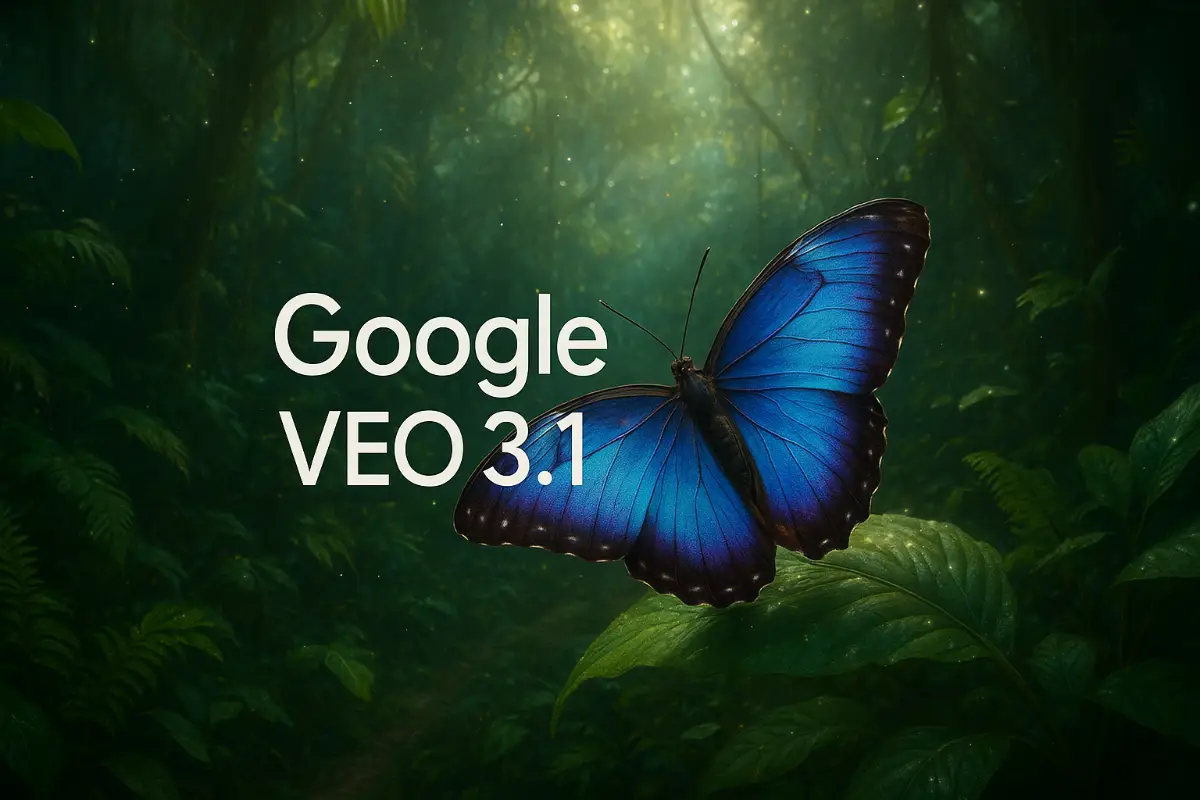| Summary |
|
Google has launched Veo 3.1, a new version of its AI video generation model that can now create videos with synchronized sound, longer run times, and tighter creative control. Announced on October 15, 2025, the update adds natural audio effects and dialogue directly into the clips, marking a major step forward in automated filmmaking.
This new model builds on the success of Veo 3, which debuted in May, and strengthens Google’s position in the fast-growing AI video space.
Veo 3.1 produces one-minute, 1080p videos that include matching sound from background ambience to voices and motion effects. The system can interpret complex text prompts like “a storm rolling over the Pacific seen from orbit” and deliver a complete audiovisual sequence that syncs action and noise in real time.
It also improves character consistency, reducing the flickering faces or changing details that plagued earlier models. Early testers describe the output as approaching professional-grade footage, with smoother motion and realistic lighting.
The upgrade is available inside Google’s Flow app and through the Gemini interface, giving creators a more hands-on way to refine their results. Users can upload up to three reference images to guide style and setting or use features like “Frames to Video” to generate transitions between stills.
Another feature, called “Ingredients to Video,” allows blending of multiple sources of images, short clips, or audio cues into a single composition. Videos can be extended by feeding the system their final frames, and a new “Fast” mode speeds up testing while keeping costs the same as Veo 3.
Since Flow’s initial release in May, users have generated more than 275 million videos through the platform, according to Google’s internal figures. The company says most activity comes from independent filmmakers, educators, and researchers who use Veo for storytelling and visualization. Its ability to add synchronized sound could make it even more appealing for content creators who want realistic clips without studio equipment.
For scientists and educators, the tool may prove especially useful. It can animate complex ideas like the motion of galaxies, the structure of exoplanets, or climate simulations in a way that ordinary software cannot. Researchers can pair real data with descriptive prompts to generate visuals that engage audiences.
In astronomy, for instance, a prompt could create a view of a black hole merger with sound frequencies derived from gravitational wave data. In classrooms, teachers could show the evolution of an ecosystem or the chemical layers of a star with clear narration and effects.
However, the same realism that makes Veo powerful raises concerns about misuse. Deepfakes are becoming harder to detect as models improve. To counter that, Google embeds digital watermarks and metadata tags in every Veo output.
The company says it is also developing AI-based detection systems to identify generated media before it spreads online. Industry analysts say such measures will be essential as synthetic video tools become common in social media and advertising.
Veo 3.1 is being rolled out gradually through Google Labs and partner APIs, with access expanding to developers and studios by early 2026. The company hopes the technology will drive innovation in education, entertainment, and research, while also setting standards for responsible AI use.
For creators, it means a faster way to turn ideas into moving images. For researchers, it opens a new medium for explaining complex science. And for audiences, it signals a future where the boundary between imagination and reality grows even thinner.

